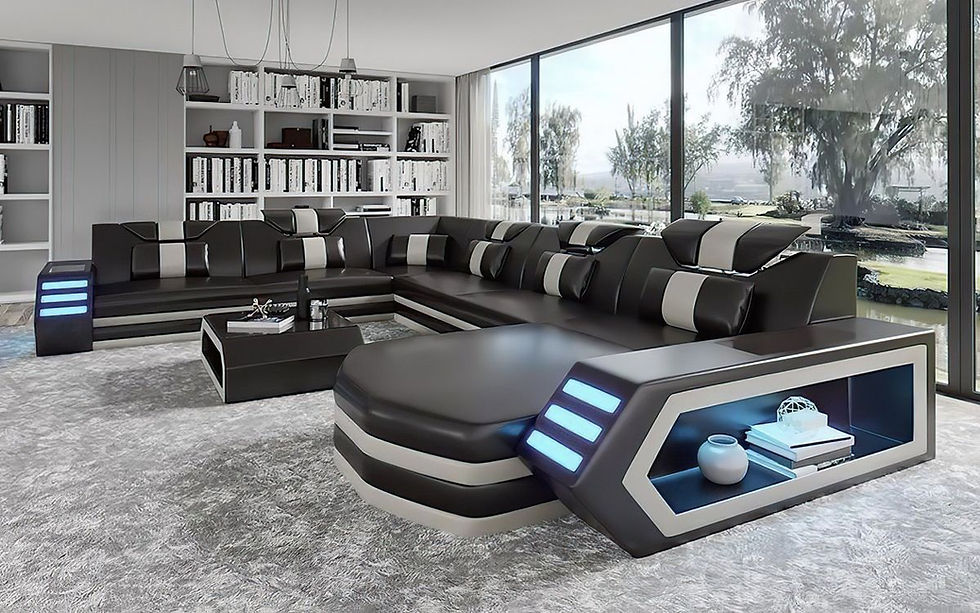Futuristic Furniture: Design and Material Trends
- Irénée Sara Lykke

- Sep 23, 2022
- 2 min read

Futuristic furniture is a vital aspect of futuristic interior design. It can be defined as furniture that features innovative designs, advanced materials, and unique shapes that make it stand out from traditional furniture. In this sense, futuristic furniture not only serves its functional purpose but also serves as an aesthetic element that adds to the overall futuristic feel of a space.
Design and material trends play a significant role in futuristic furniture. Some of the current design trends include minimalist and modular designs that can be customized to fit specific needs. These designs also feature clean lines and geometric shapes, which are hallmarks of futuristic design. Other design trends include multi-functional furniture pieces that serve multiple purposes and compact furniture pieces that save space.
In terms of material trends, there is a growing focus on sustainability and eco-friendliness. This means that futuristic furniture is often made using eco-friendly materials such as bamboo, recycled plastic, and upcycled materials. Additionally, there is an increasing use of smart materials that can adapt to their surroundings and serve multiple functions.
Another trend in futuristic furniture is the use of advanced technology. This includes the use of 3D printing to create unique furniture pieces and the incorporation of smart technology into furniture pieces. For example, some furniture pieces come with built-in sensors that can adjust the temperature, lighting, and sound in a room based on the user's preferences.
In terms of material trends, designers are also experimenting with new finishes and textures to create unique and visually striking furniture pieces. For example, a popular trend is to use metallic finishes such as chrome or brass to create a futuristic and industrial look. Textured surfaces such as concrete or reclaimed wood are also being used to create a more organic and natural feel.
Some features of futuristic furniture design and material trends include:
Minimalist and geometric designs: Futuristic furniture often features simple and clean lines with geometric shapes and patterns, giving a sleek and modern look.
Innovative materials: Sustainable materials such as bamboo, recycled plastics, and composites made from natural fibers are becoming increasingly popular in futuristic furniture design.
Unique textures: Texture plays an important role in futuristic furniture design, with materials like brushed metal, glossy plastics, and textured fabrics creating a tactile and visually interesting experience.
Integrated technology: Many futuristic furniture designs incorporate technology, such as built-in charging ports and LED lighting, to enhance functionality and convenience.
Multifunctional: Futuristic furniture often serves multiple purposes, such as a bed that can be converted into a sofa or a table that doubles as a storage unit.
Organic shapes: While geometric shapes are prevalent in futuristic furniture, organic shapes and fluid curves are also becoming more common, adding a sense of movement and energy to the design.
Bold colors: Bright and bold colors are often used in futuristic furniture design to create a vibrant and eye-catching look.
Overall, the design and material trends in futuristic furniture are constantly evolving. As technology continues to advance and sustainability becomes increasingly important, we can expect to see even more innovative and eco-friendly designs in the future.



Comments